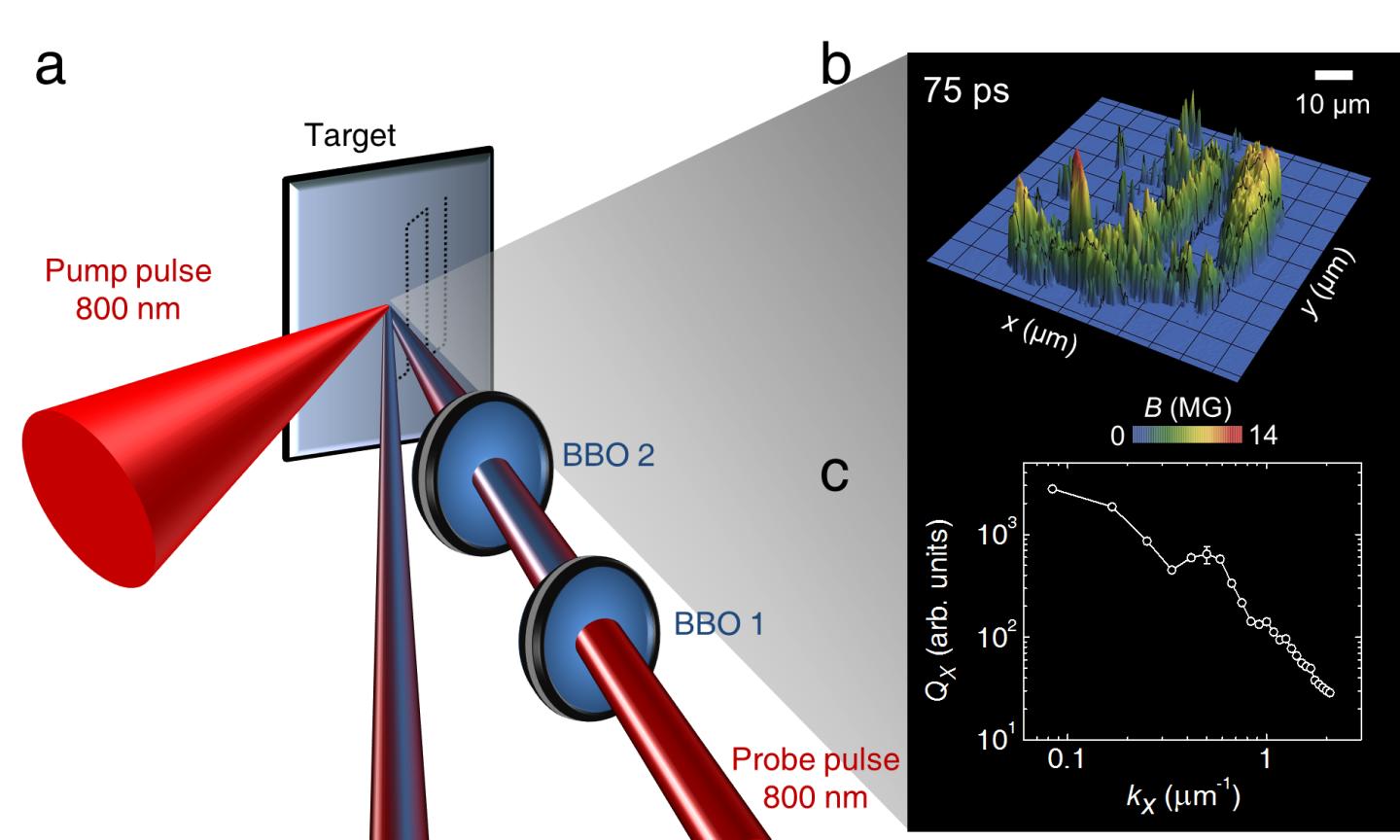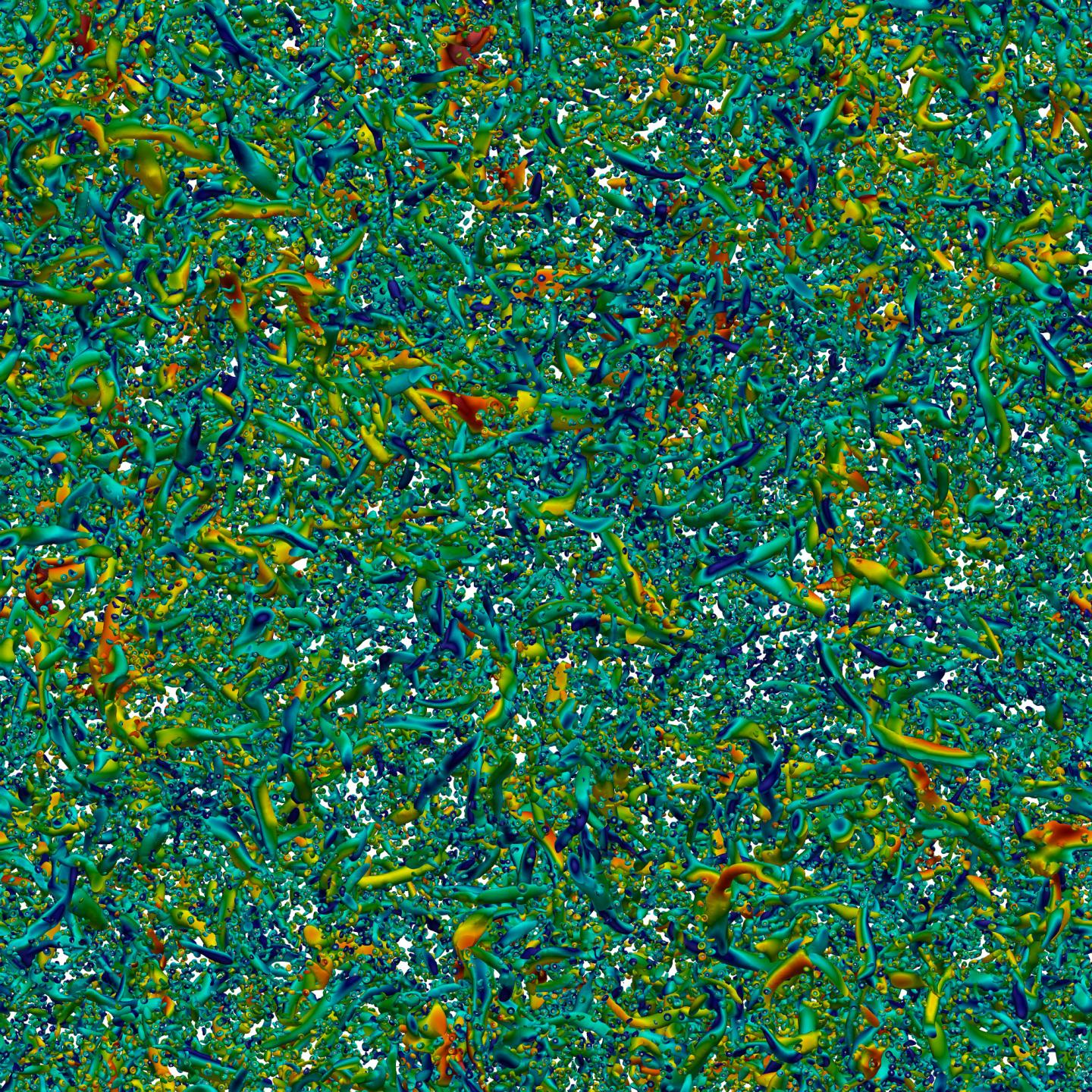
(a) A pump pulse creates the plasma on a solid while a probe pulse monitors the time evolution. The top panel in b shows the spatially randomized magnetic field in the plasma while the figure at the bottom shows the power spectrum of the magnetic field (magnetic energy density variation of with inverse of spatial length. The curve indicates magnetic turbulence in the plasma and mimics that from the solar wind.

Using the HLRS Hazel Hen machine, RWTH Aachen University researchers were able to run a DNS simulation on a system of 45,000 particles at the Kolmogorov scale. To the team's knowledge, this is the direct-particle simulation for the largest number of particles at this scale to date, and serves as a benchmark for how other researchers studying this process can get more realistic simulation results.

Argonne chemists Dugan Hayes, Lin Chen, and Ryan Hadt have identified a rapid electronic process that could aid the water-splitting reaction in cobalt-containing catalysts. Cobalt catalysts are relatively inexpensive and could replace more expensive precious metal catalysts in the production of clean energy, most notably solar fuels.